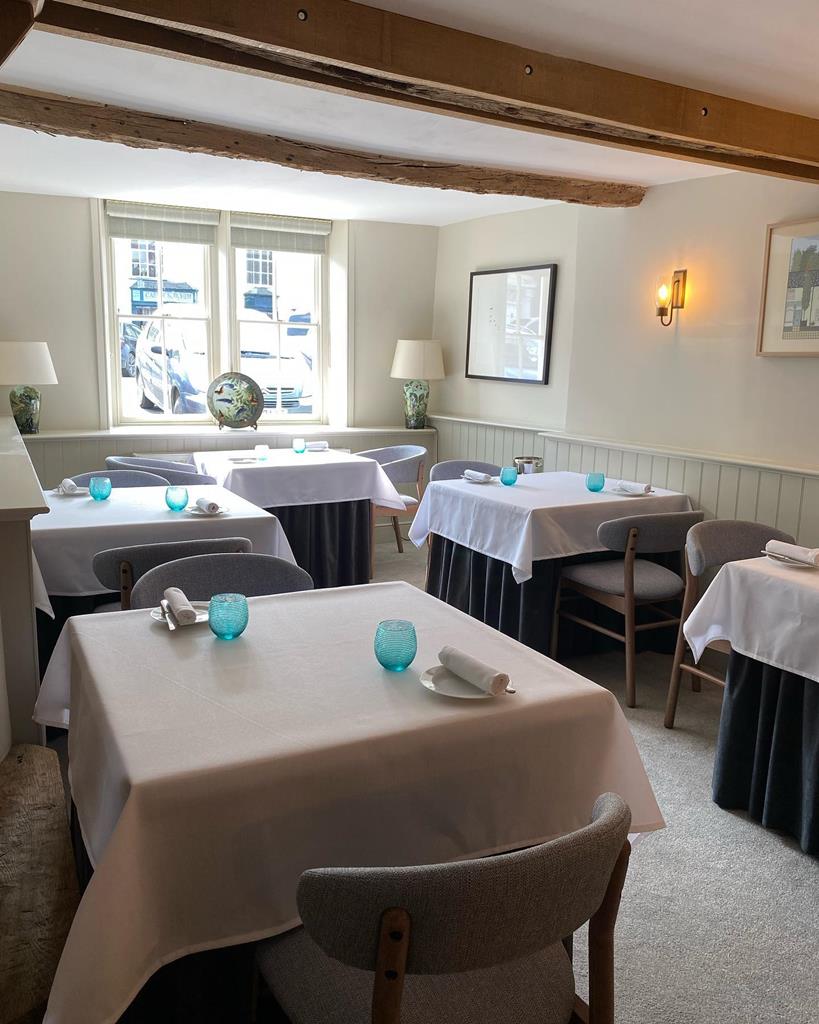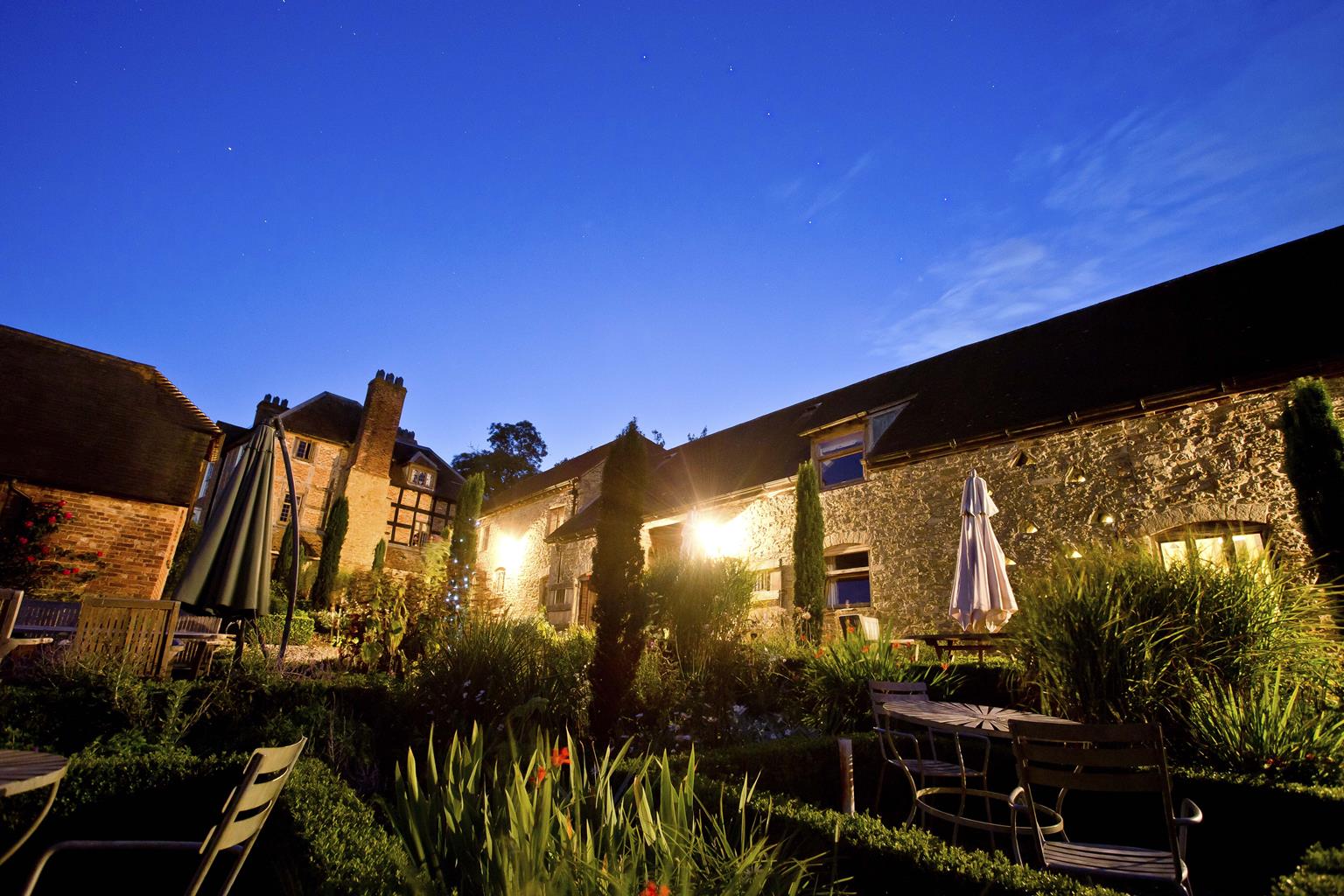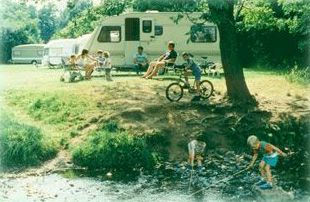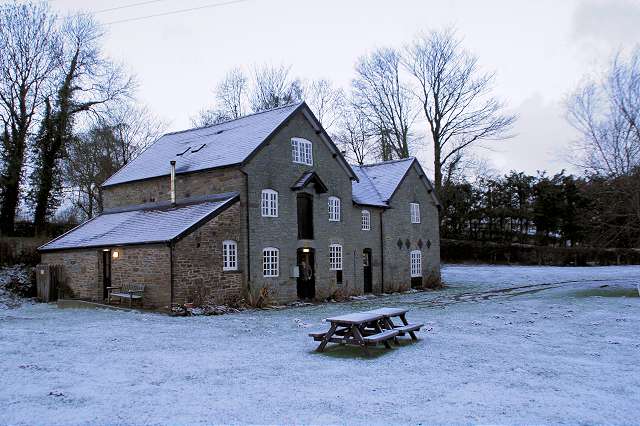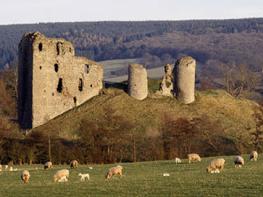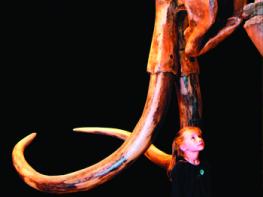Peacefully located between Craven Arms and Churchstoke and surrounded by rolling hills, this…
Bishop's Castle and into Wales

Explore a very small town with a fascinating and varied history.
7 miles (11.3kms)
About the walk
Bishop's Castle is one of the smallest towns in the country. If it was in the southeast it would be smaller than many a neighbouring village. But a town it is, and one of enormous charm and fascination. There is nothing ordinary about Bishop's Castle. Its documented history began in Saxon times when Egwin Shakehead, grateful for having been miraculously cured of the palsy at St Ethelbert's tomb in Hereford Cathedral, gave what is now Bishop's Castle to the Bishop of Hereford. The castle was built around 1100 by another Bishop of Hereford, but very little remains of it today. What does survive can be viewed from Castle Street.
From Rotten Borough to Colourful Town
In the early Middle Ages, the parish of Bishop's Castle was partly in England, partly in Wales, so territorial dispute was a way of life. In later years, after peace came to the Marches, Bishop's Castle acquired notoriety as the smallest and rottenest of rotten boroughs, a term which denoted electoral corruption. From 1585 this tiny town returned two MPs to Parliament. Local landowners (including Robert Clive, better known as Clive of India) expended vast sums of money on buying voters and seats to increase their power. In 1726, one rejected candidate was able to prove that of the 52 people voting for his rival, 51 had received bribes. The Reform Act of 1832 put an end to this kind of thing, and Bishop's Castle was disenfranchised.
It has attracted artists, writers, musicians and craftspeople and has reinvented itself as a town of fairs, festivals and fetes. Dozens of colourful, hand-painted banners are hung along the main street for events such as the Michaelmas Fair. It must surely be the most colourful place in Shropshire, with buildings painted in all colours of the rainbow. The Six Bells Inn looks magnificent in yellow, and the violin maker's house at the top of the town is a delightful bluey-purple. Rather more eccentric is the house painted white with green circles - but after a while it starts to look almost normal, such is the effect of Bishop's Castle.
Bishop's Castle is also home to a group called the Knitwits, who have taken delight in 'yarn-bombing' the town, adorning bollards, doorways and other features with colourful knitted and crocheted decorations. There's even a child's bicycle completely encased in yarn. One of the group explained, 'We want to brighten up the town and make people smile.'
Walk directions
Walk up Church Street, High Street and Bull Street, then go left along Bull Lane. Continue almost straight ahead into a new development of eco-homes, the Wintles. Pass between two granite obelisks and 50yds (46m) further on go up steps on the right, with wooden railings. Go left on a green path, near the road, then keep on ahead, following footpath signs. Cross a track into a green lane.
Follow the right edge of the next field, cross a stile at the top and go slightly left to a fence corner. Follow the fence/hedge past a pond to a stile. Go slightly left across the highest point of the next field, then down to a gate halfway along the far hedge. Go diagonally right across another field to meet a hedge and follow it through fields to a lane. Turn left to meet a road.
Turn right, immediately right again and then left on to lane, which soon becomes a track. It descends into woodland, crosses the border into Wales and eventually meets a lane.
Turn left and walk up to meet a road, the Kerry Ridgeway, at Bishop's Moat, where you cross back into England. Turn right, then over the first stile on the left. Go diagonally left to the end of a line of hawthorn trees, then continue in the same direction over another field to meet the far hedge where there's a kink in it.
Go diagonally across a third field to meet a line of trees which leads to a gate. Continue down the next field to the far corner, walking through one of those scrap metal collections that so many farmers seem to love.
Meeting a farm lane, turn right. Go through the farmyard at Upper Woodbatch and continue on down the sunken track to a stile on the left.
Descend a little further, now with the hedge on your right, then go left across the field to a gate at the far side below the steeper slope. Continue across two more fields to meet a lane. Join the Shropshire Way opposite, following it along the bottom of several fields, quite close to the brook.
After passing an abandoned quarry, turn left uphill opposite a gate and track on your right. Join a track, then a green path which leads to Field Lane. Follow this to Church Lane, which leads to Church Street and the beginning of the walk.
Additional information
Generally good, undefined across some fields, 20 stiles
Gently hilly and mostly pastoral, with great views
Can run free on track between Bankshead and Shepherdswhim, livestock elsewhere
OS Explorer 216 Welshpool & Montgomery
Car park off Station Street
At car park and by Market Square
WALKING IN SAFETY
Read our tips to look after yourself and the environment when following this walk.
Find out more
Also in the area
About the area
Discover Shropshire
Perhaps nowhere else in England will you find a county so deeply rural and with so much variety as Shropshire. Choose a clear day, climb to the top of The Wrekin, and look down on that ‘land of lost content’ so wistfully evoked by A E Housman. Peer through your binoculars and trace the course of Britain’s longest river as the Severn sweeps through the county, from the Breidden Hills to Wyre Forest, slicing Shropshire in two. To the north is a patchwork of dairy fields, hedgerows, copses and crops, broken at intervals by rugged sandstone ridges such as Grinshill or Nesscliffe, and dissected by a complex network of canals.
Spilling over the border into neighbouring Cheshire and North Wales is the unique meres and mosses country, with serenely smooth lakes glinting silver, interspersed with russet-tinged expanses of alder-fringed peat bog, where only the cry of the curlew disturbs the silence. South of the Severn lies the Shropshire Hills AONB. It’s only when you walk Wenlock Edge that you fully discover what a magical place it is – glorious woods and unexpectedly steep slopes plunge to innumerable secret valleys, meadows, streams and farmhouses, all tucked away, invisible from the outside world.
Nearby stays
Restaurants and Pubs
Nearby experiences
Recommended things to do
Why choose Rated Trips?
Your trusted guide to rated places across the UK
The best coverage
Discover more than 15,000 professionally rated places to stay, eat and visit from across the UK and Ireland.
Quality assured
Choose a place to stay safe in the knowledge that it has been expertly assessed by trained assessors.
Plan your next trip
Search by location or the type of place you're visiting to find your next ideal holiday experience.
Travel inspiration
Read our articles, city guides and recommended things to do for inspiration. We're here to help you explore the UK.

